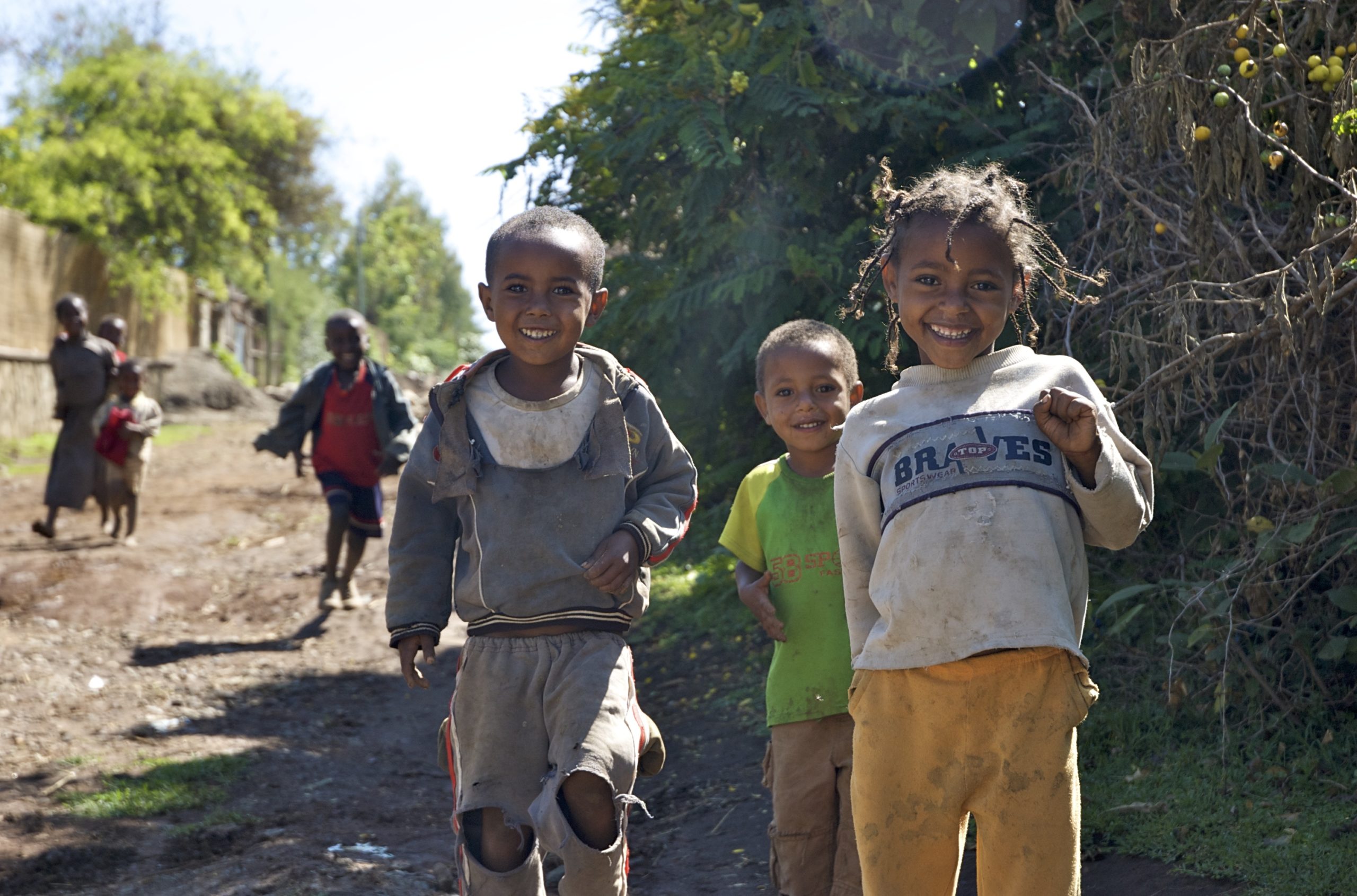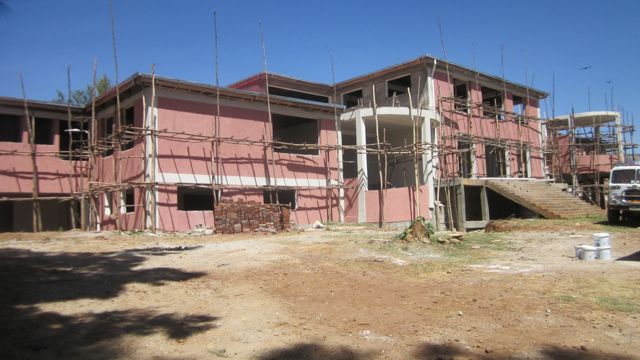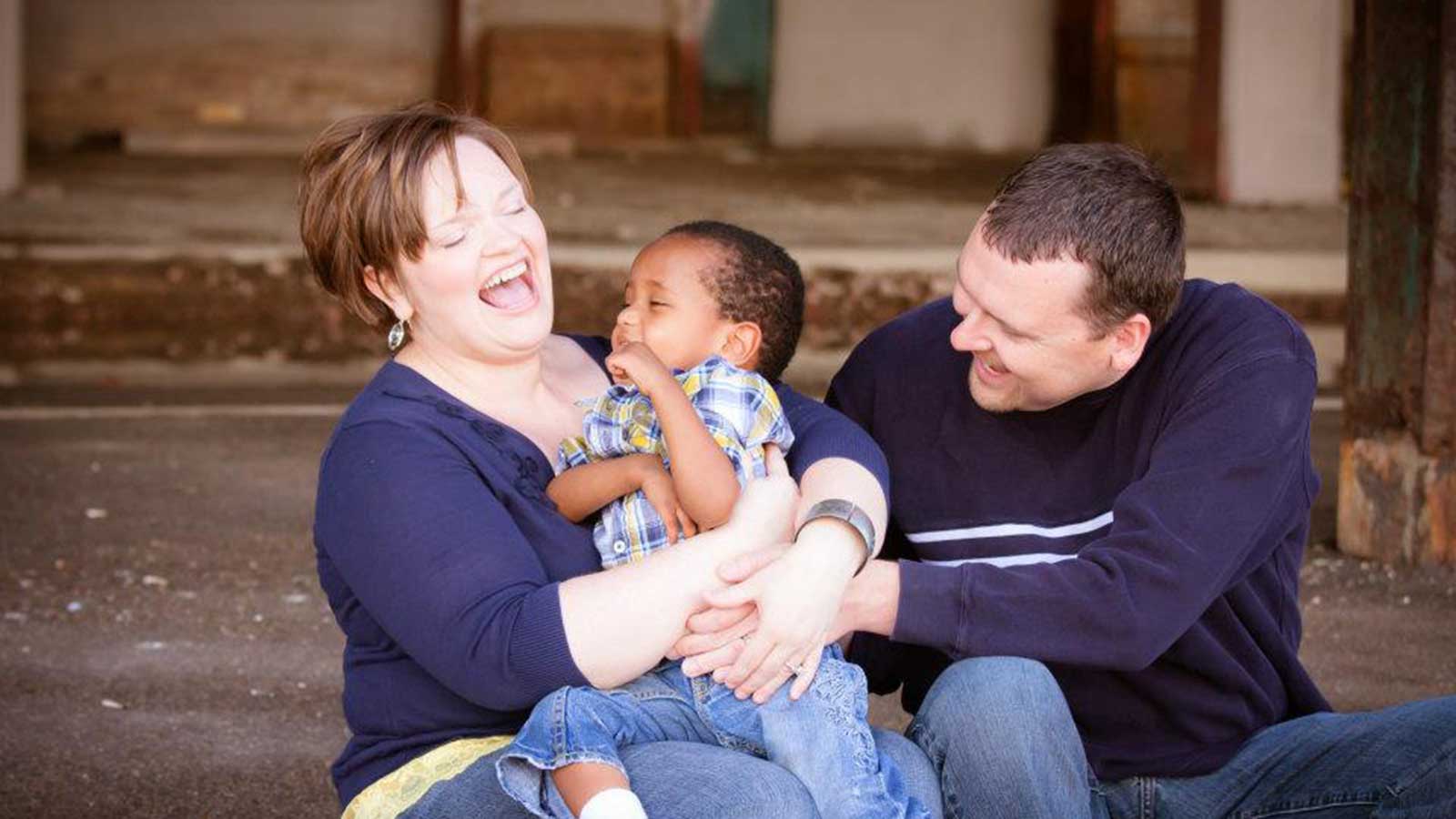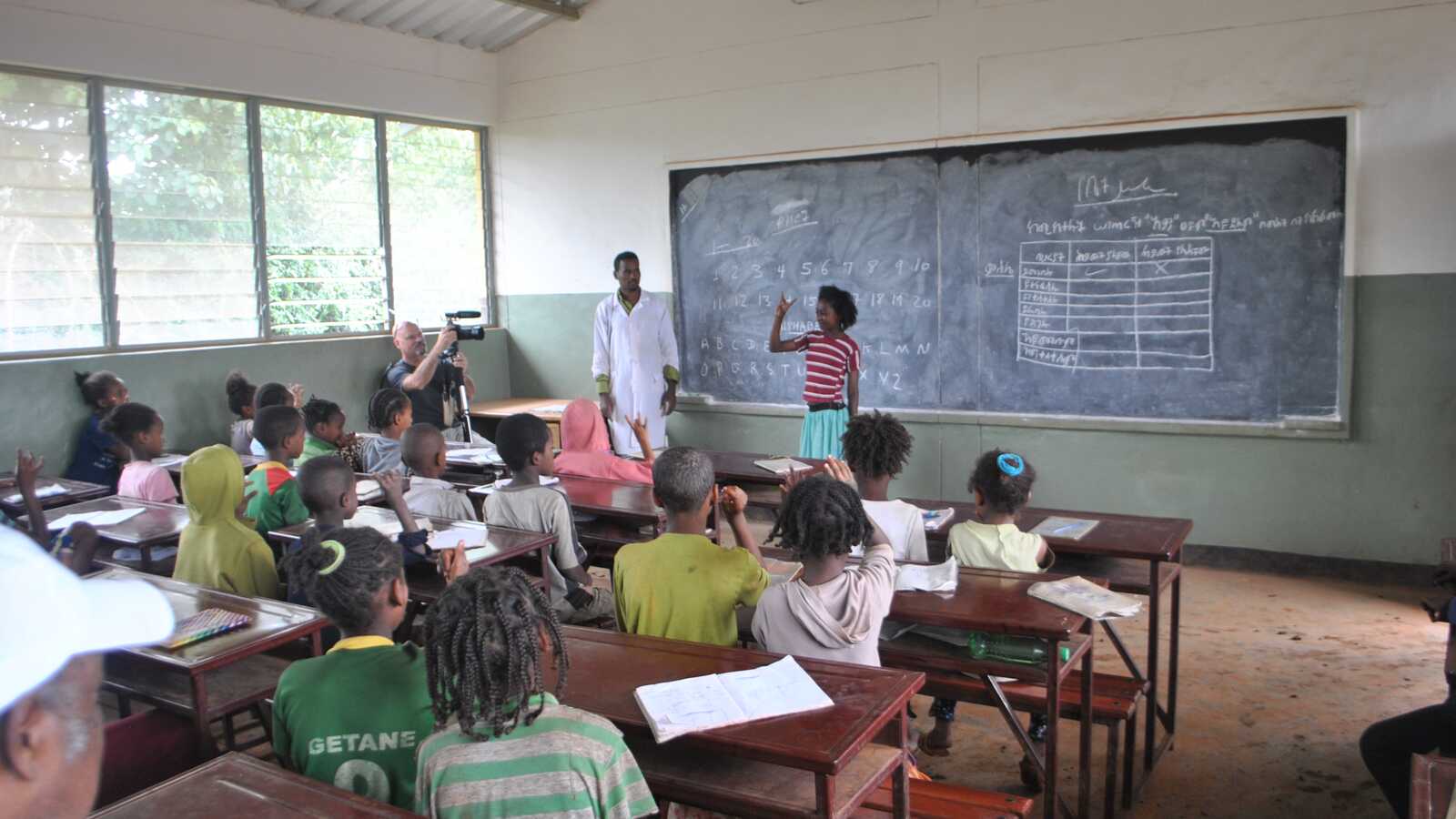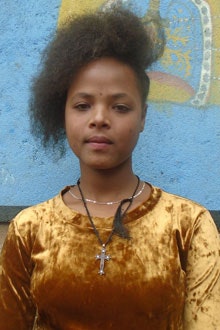Whether it is two communities partnering to build a life-saving hospital, sponsors and parents joining forces to educate children with special needs, or a family welcoming home their newest edition, Holt International and the people of Shinshicho, Ethiopia have come together for one cause: to give children a brighter, more hopeful future.
A Place to Learn
In 2010, Ato Abebe Abura, a businessman in Shinshicho, Ethiopia, was walking through a lively market where residents sell coffee beans from hand-woven baskets, rolls of colorful fabric, and heaps of bananas. Families were busy buying and selling goods, and children were busy running and playing. He saw a group of children surrounding one boy. At first, he thought they were playing. When he realized the boy was being beaten, Abebe rushed in to help. He broke up the crowd and pulled the boy to his feet.
It took a moment, but Abebe soon realized why the boy was being bullied. He was deaf.
In Shinshicho, the rate of deafness in children is alarmingly high. More than 500 children in the area have been identified as deaf, and most are from poverty-stricken families — the same families we support through family strengthening and other programs. No one is sure why deafness is so prevalent here. Some think it may be an adverse side effect of malaria, or even malaria antibiotics. Others suspect it’s genetic.
While the cause is unclear, the impact on deaf children is quite apparent — and goes beyond a daily struggle to communicate. In Ethiopia, most physical disabilities are heavily stigmatized. “For children with disabilities, including deafness and blindness, it is very terrible,” says Dan Lauer, Holt’s vice president of programs in Africa and Haiti. “They are marginalized from the community.”
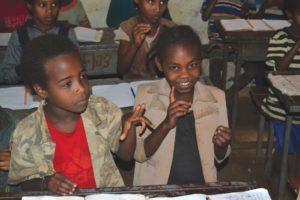
Until three years ago, the deaf children of Shinshicho were mostly kept behind closed doors and had nowhere to learn. Without a place in society, they also risked losing their families — ending up on the streets, vulnerable to abuse and exploitation.
In 2010, Abebe convinced country officials to donate a mud-and-stick, two-room school, and he worked with the ministry to find sign language teachers. Recognizing that this school is vital to keeping deaf children in their families, Holt aided with supplies, and now about 200 students attend the first school in Shinshicho for deaf children. For some of these children, the school is the first place — outside of their homes — where they feel safe and loved.
During Dan’s visit in August, he watched as children bent and curled their fingers, following the hand movements of their teachers in white lab coats. Their shoulders touched those of the student sitting on a bench next to them, and the classroom was hot and sticky. The teacher scratched a stick-figure shape of a dog onto the blackboard with chalk. The kids slapped their thigh twice, lifted their hand near their chin and snapped their fingers. Dog.
In the classroom with older kids, they were stringing together sentences, and learning to write in English and Amharic.
“This school is giving our children a chance for a future,” one student’s father told Dan. “Before they came to this school, they could not talk to anyone, including their mothers and fathers. Now they have a life that was not possible before. Whatever it takes to get them to school, we will do it.”
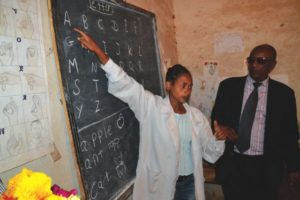
On Saturdays, parents attend classes too, learning to communicate with their child for the first time. The parents laugh and follow along in the lesson with their child. Some have walked up to eight miles to be here. “Most of these parents are very poor,” Dan says. “They are mostly illiterate and for them, this is their first time receiving an education. It’s very emotional for them.”
Already, the number of students has overwhelmed the available space and resources. When the school opened, they had space for 50 students, but didn’t want to turn away any of the hopeful faces who showed up — eager to learn.
With the help of local officials and Holt, the community is drafting plans to expand the school. Next year, the school hopes to add at least 100 new students, and continue adding students at the same rate each year until every deaf child is included.
By giving them a place in society, this grassroots movement is slowly erasing the stigma against deaf children in Shinshicho. “For the first time, kids get to have supportive friendships and normal childhoods,” Dan said. “They get to re-enter their community, and be embraced.”
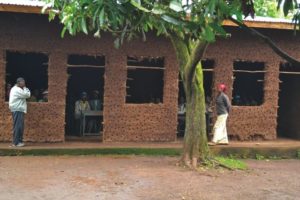
Holt is working with the school to determine how we can continue to assist. Holt hopes to add 50-100 families with deaf children to our sponsorship and family strengthening program. In addition to educational assistance, sponsors will help provide these families with medical care, livestock and other projects to generate income, and other vital services. While these family strengthening services will help keep deaf children in their families, the education they receive at the school is essential to their overall health and wellbeing. In many ways, supporting this school is an important part of achieving our mission in Shinshicho.
Less than three blocks away stands the nearly complete Shinshicho Mother and Child Hospital — the hospital Holt is helping to build for the people of this community. Dan hopes that once the hospital is operational, some time and resources will go toward studying and identifying the cause of deafness in the region — and ultimately, eradicating it from Shinshicho.
A Place to Heal
The parking lot of Eugene, Oregon’s Big Y Storage looks like a Tetris board of metal IV drips, padded gurneys and birthing equipment. On an unseasonably hot September morning, volunteers from four local organizations and businesses are emptying three large bays of storage, each overflowing with medical gadgets, into a semi-truck.

From the Big Y lot, the equipment will embark on the first leg of a two-month journey, from Eugene to Seattle in a 40-foot shipping crate, across the Pacific by ship to the port of Djibouti in the horn of Africa, then by truck to its final destination — the hospital Holt is helping to build in Shinshicho.
In this isolated region scarred by civil war, famine and illness, thousands of women and children die every year in childbirth, or from other preventable causes.
Three years ago, Holt allied with the Shinshicho community to combat this reality. Together, we would build a 40,000-square foot maternal and child hospital in Shinshicho, equipped with surgical units, X-ray labs and more than 100 doctors trained in advanced care. Although this project developed from a partnership between Holt and Shinshicho, Holt never anticipated this decision would unite two communities from opposite ends of the globe; together, we would turn an incredible vision into a life-saving reality.
It all started in 2007.
When Holt began a family strengthening project in Shinshicho six years ago, the region’s only health clinic desperately needed repairs. Many mothers were forced to gamble on their health, and the health of their children. When children had high fevers or mothers went into labor, they could try to make the 12-mile journey by foot to the nearest hospital, or hope for the best. Seeing the tremendous need for better medical care, Holt helped revamp the run-down clinic, and more than 50,000 people received care the first year. Still, the clinic couldn’t treat more advanced conditions.
At the urging of Shinshicho elders, Holt and officials from Ethiopia began to draft plans for a hospital focused on mother and child health, but equipped to offer life-saving medical care to the 250,000 people who live in the region.
Neither Holt nor Shinshicho could have predicted how God would make the hospital come together. But Psalm 145:14 is a reminder that, “The Lord is faithful to all His promises and loving toward all He has made.” True to His promises, the Lord orchestrated a plan that moved hearts to action.
In 2009, a year before the hospital project officially began, Patric and Holly Campbell traveled to Ethiopia to adopt their son, Miles. While there, they visited the clinic in Shinshicho, and heard about plans for the new hospital. Not long after the trip, Patric was in a board meeting at Slocum Center for Orthopedics and Sports Medicine in Eugene, Oregon — the Campbells just happen to live in the same town as Holt’s headquarters — when he heard the company wanted to upgrade some of their X-ray equipment. Patric saw an opportunity to help the hospital that still weighed heavy on his heart, and asked Slocum to donate their unneeded equipment to Shinshicho.
“The equipment still had a 20-plus year lifespan,” Patric says, “Slocum didn’t want the equipment to become junk.”
In 2010, Slocum donated two full rooms of X-ray equipment, including tables, machines and film processing materials.
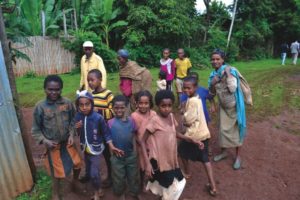
Meanwhile, in Shinshicho, the hospital project was transforming local families before the foundation had even been poured. Holt strived to employ locals to build the hospital, which created more than 200 new jobs in the area.
“Part of the reason the hospital is taking longer to build is that it was important to keep the work local, which means the workers had to be trained,” says Holt’s vice president of Africa programs, Dan Lauer. The construction crew has learned skills that will continue to increase their employment opportunities long after the hospital is complete, ultimately strengthening their ability to provide for their children.
Four village elders rallied the community to raise funds, and gathered support from farmers, ministry officials and local leaders. Already, the people of Shinshicho have pooled more than $150,000, and they’ve done it by donating $2-20 at a time. Many people in Shinshicho live on less than $2 per day, so these funds represent a tremendous sacrifice. “When I visit people struggling to survive — they mostly live on subsistence farming — it’s amazing to think of that many donations,” Dan says.
After Slocum donated the X-ray equipment, Patric told hospital administrators about Shinshicho, and some clinics donated equipment. Patric also met with Eugene’s Delta Rotary Club, which shared some incredible news. Across Oregon, when medical clinics updated their equipment, rotary clubs in the area had the vision to place the discarded equipment into storage. Across the state, hospital supplies began to stockpile, waiting to be put to good use.
Shinshicho was the perfect opportunity.
In 2011, Big Y Storage donated three bays of space to keep the hospital equipment in one central location in Eugene.
On the equipment shipping day, Rotary Club members volunteered to do the heavy lifting, and an international shipping company based in Eugene, Lile Moving and Storage, donated trucks to facilitate the haul. Wheelchairs, ultrasound machines, and exam tables litter Big Y’s parking lot. While Patric coordinates the move on his cell phone, volunteers carry boxes of gowns, blankets and X-ray illuminators into the truck, which will then transport the supplies to Lile’s headquarters. Then, everything, including Slocum’s X-ray equipment, will be loaded into one of two 40-foot metal shipping containers.
Already, Shinshicho is drafting future plans for the hospital. The district donated a large parcel of land, which could some day house medical staff offices or a care center for the elderly. The zonal health ministry is committed to staffing the hospital long-term, and continuing to invest financial resources in the project.
The community of Eugene helped the hospital get off the ground, but it’s the community of Shinshicho that will keep the hospital running for years to come. The hospital is set to open in early 2014, and already there is a sense of hope — both in Eugene and Shinshicho — for the future.
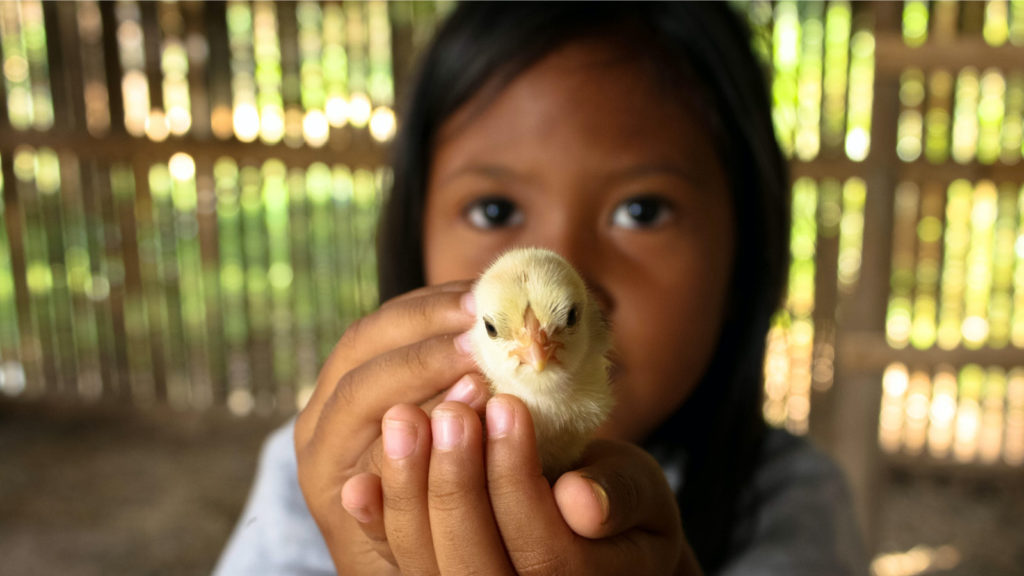
Give a Gift of Hope
Give a lifesaving or life-changing tangible gift to a child or family in need. And this holiday season, give in honor of a loved one and they’ll receive a free card!
A Place to Call Home
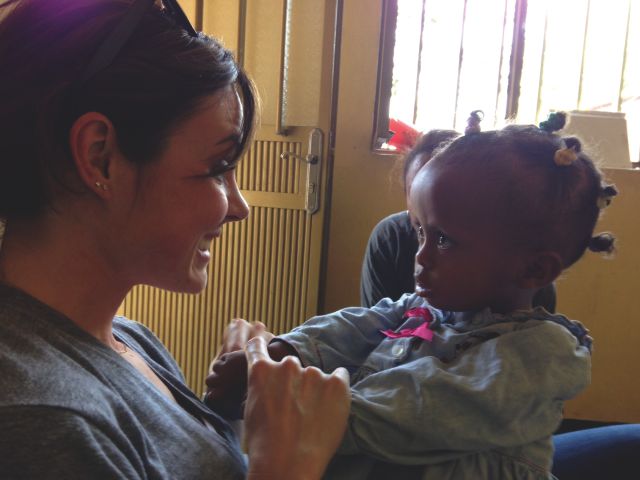
The bus bounced and bobbled during a 45-minute drive on rough, dirt roads through Ethiopia’s capital city. Shannon and Jeff Britton had studied books on the region, but this was their first time in the country, and as the driver pulled up to a small gate and honked a few times to be let in, their hands shook with nervousness. The care center director welcomed the American guests, and led them to a back room where a row of babies was fast asleep. The caretaker picked up one baby, a tiny 14-month-old who had just recently entered care. Ketinbone, which means “she who has pride,” wore a blue denim dress, her short, dark hair separated into little ponytails all over her head. Shannon wasn’t sure whether to laugh or cry. She and Jeff had waited more than two years for this moment, fighting off doubt that it would ever come. When the caretaker handed Ketinbone to Shannon, the baby didn’t cry or seem scared. Her big, sleepy brown eyes curiously studied the woman smiling down on her, tears in her eyes.
Ketinbone didn’t know it, but she was meeting her parents for the first time.
In Ketinbone’s native Ethiopia, more than 4.6 million children are missing one or both parents. Illness, economic instability, and drought all threaten the livelihood of families and children — children like Ketinbone, who is just one of many whose family felt compelled to relinquish her not for lack of love, but lack of resources.
When Holt began our work in Ethiopia in 2007, we aimed to help strengthen vulnerable families, and find families for orphaned and abandoned children — for children who truly need adoption to have a stable, loving home. Whenever possible, we strive to keep or reunite children with their birth families before pursuing adoption. But some children have lost their families. Or in some cases, their families have made the informed decision to place them for adoption. For these children, adoption is truly the best avenue to a stable, loving family.
This fact has remained unchanged in the years since Holt began placing children from Ethiopia. What has changed is the number of children coming home every year.
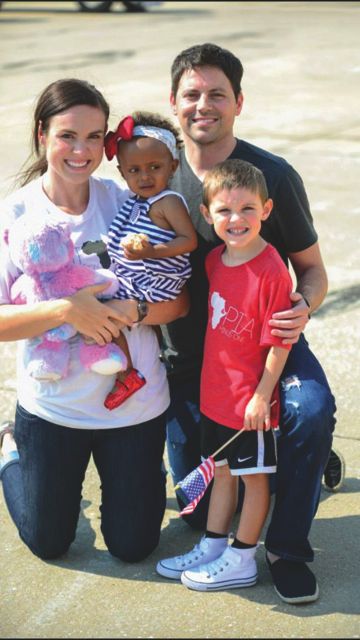
In 2008, adoption placements grew as hopeful adoptive families learned of the need in Ethiopia. The following year, Shannon and Jeff Britton spent a week caring for orphans in Guatemala, and their hearts opened to the idea of adoption. On Shannon’s 25th birthday — in 2010 — they submitted paperwork to adopt a child from Ethiopia. A short while later, Ethiopia began to limit placements and create stricter adoption guidelines over concerns about child trafficking. While Holt joined forces with the U.S. and Ethiopian government to help ensure important protections for children and their birth parents, the process slowed to a near halt for many families. Meanwhile, the number of orphaned and abandoned children continued to grow.
Caught in the delays, the Brittons continued to wait for a match. They stayed awake at night questioning whether adoption was really God’s plan for them, and every time Holt’s 541 area code appeared on their phones — their hearts jumped, and then sank. Then, one afternoon nearly two years into the process, Shannon laid her son down for a nap, and kicked back to relax. Her phone rang.
“It was a number I didn’t recognize, but it said Oregon, and if you’re adopting from Holt, you always answer if it’s a call from Oregon,” Shannon says. “I said hello, expecting that we needed to turn something in.”
The call was from Holt. They had a daughter.
Crying, shaking and jumping, Shannon drove to meet Jeff at his office. Together, they opened an email from Holt, and a picture of Ketinbone stared back at them. In July 2013 — two years and eight months from the time they applied to adopt — Shannon and Jeff brought their daughter, “Kettie Lou,” home.
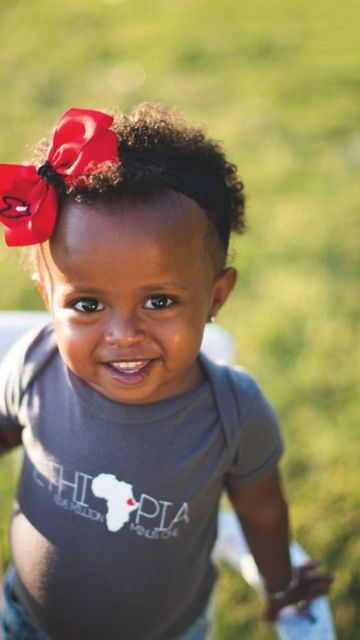
Today, as Ethiopia continues to strengthen safeguards for children, the standard time frame to adopt from Ethiopia is upwards of 26 months. But just this year, Holt’s Ethiopia program has matched 70 children with families — a number small in comparison to the 186 placed in 2010, but a significant increase from the last two years. While the majority of children being placed in loving homes are infants-to-3 years old, older children, children with special needs, and sibling groups are also finding families. As referral ages vary, Holt is only accepting applications from families who are open to adopting a child 5 years or older, which helps ensure that every child referred to us for home-finding will soon be matched with a family. To keep wait times reasonable for families, our Ethiopia program is only accepting a limited number of applications.
Shannon and Jeff say even though their process was tricky, the transition home has been relatively easy. Kettie is giggly and happy. She gained five pounds in her first seven weeks home. She and her brother Charlie are best friends, and Kettie is learning to identify all the members of her big new family. When Kettie is ready to learn about her family in Africa, Holt has provided Jeff and Shannon an incredible resource to guide that conversation.
In April, Holt began a partnership with care centers in Ethiopia to create an innovative new resource for adoptees and their parents, called “life books,” which are short, deeply personalized documentaries on the child’s birth country and life prior to adoption. The life book helps answer an adoptee’s questions about his or her birth family, and also reassures parents that their child’s relinquishment was well considered and done purely out of love.
Kettie’s life book is about 11 minutes long and includes interviews with her birth mother, scenes from the town where she was born, and important information about Kettie’s birth family and circumstances of relinquishment. The DVD is both heartbreaking and reassuring, intimate yet candid.
Jeff and Shannon say Kettie’s life book is a blessing. Some day, it will help answer questions Kettie may have, and remind Kettie how deeply loved she was and is.
“We knew a lot of Kettie’s story before the life book was given to us,” Shannon says. “Because of that, it was hard for us to get the courage to watch it. We deeply love Kettie’s birth mother, and are saddened by the events in her life. The blessing Kettie is to our family and our gain came with great loss and pain for her young birth mother.” Like many young women, Kettie’s birth mother faced tremendous struggles, and wanted Kettie to have a better future.
Shannon is grateful that Kettie will be able to see what her birth mother looks like, and hear how much she loves her.
While adoption wasn’t easy for the Brittons, it was worth it. “We would cry every tear and go through those sleepless nights again in a heartbeat,” Shannon says. “She is more than worth the wait.”
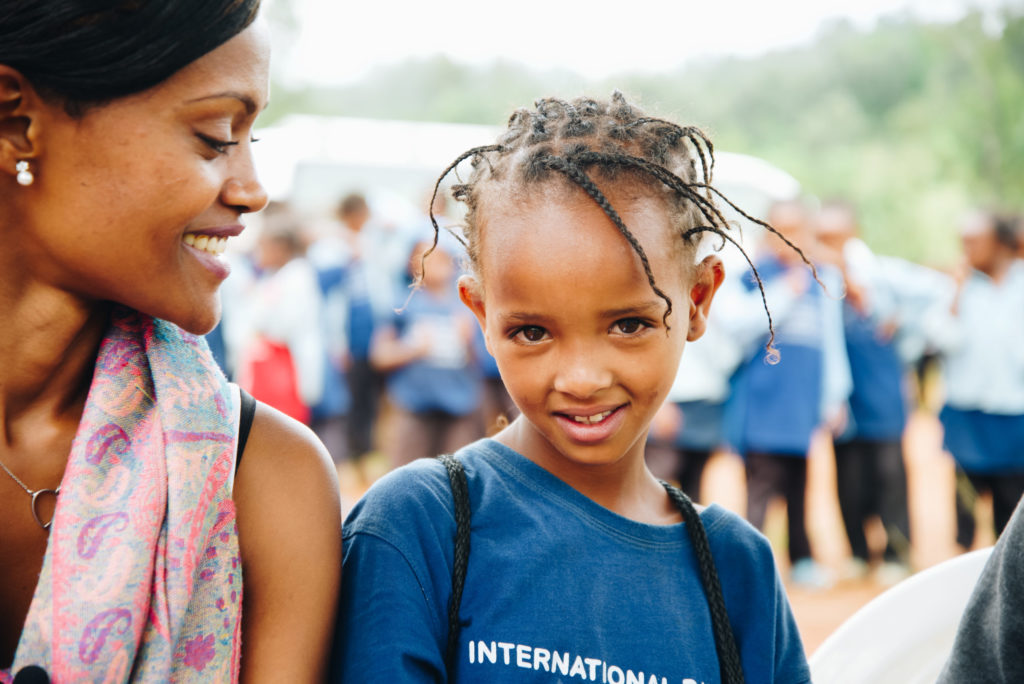
Learn more about Holt’s work in Ethiopia!
See how sponsors and donors create a brighter, more hopeful future for children and families in Ethiopia!
